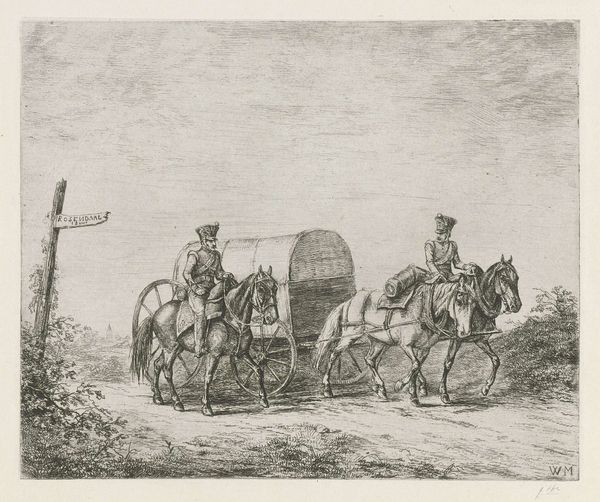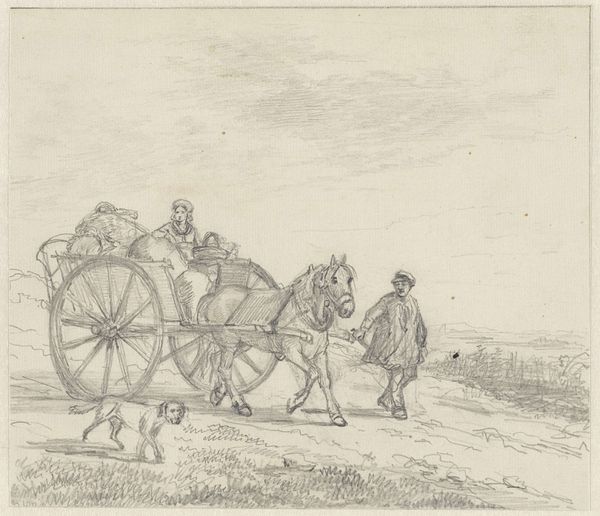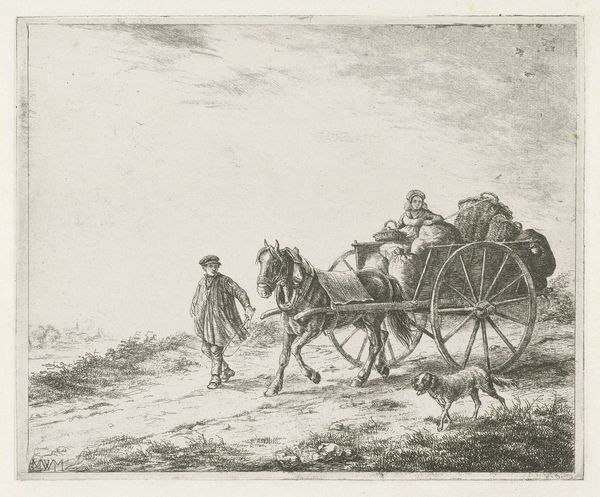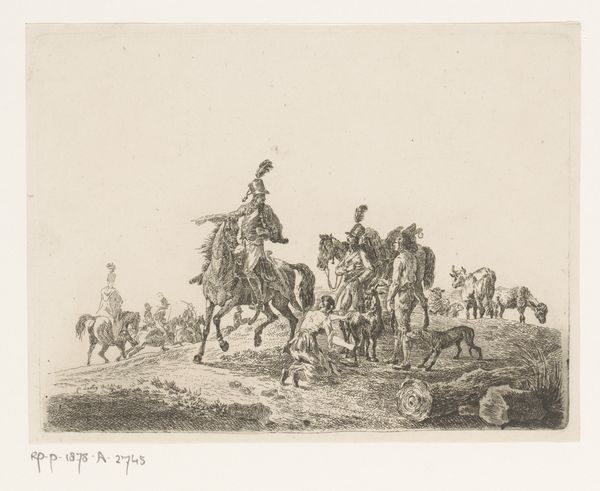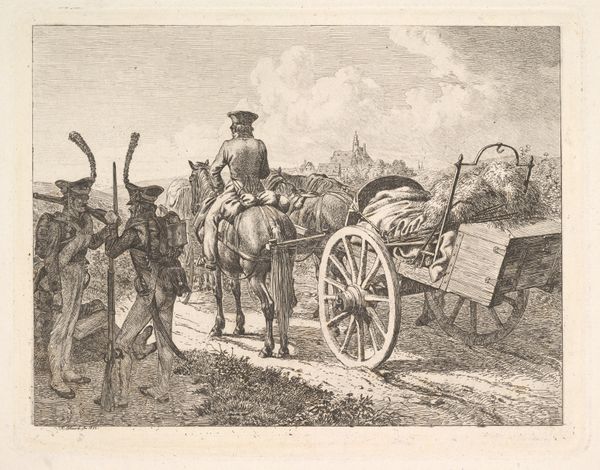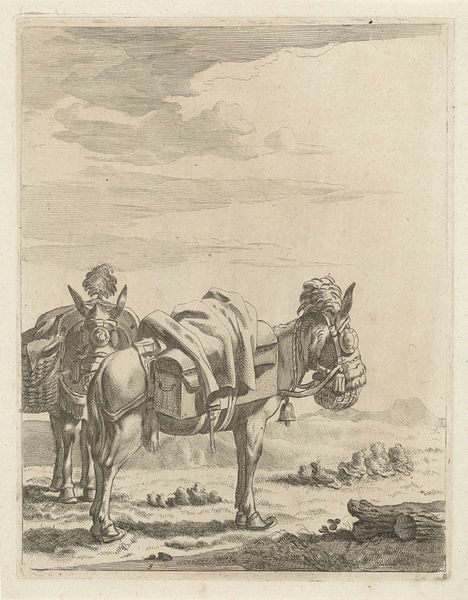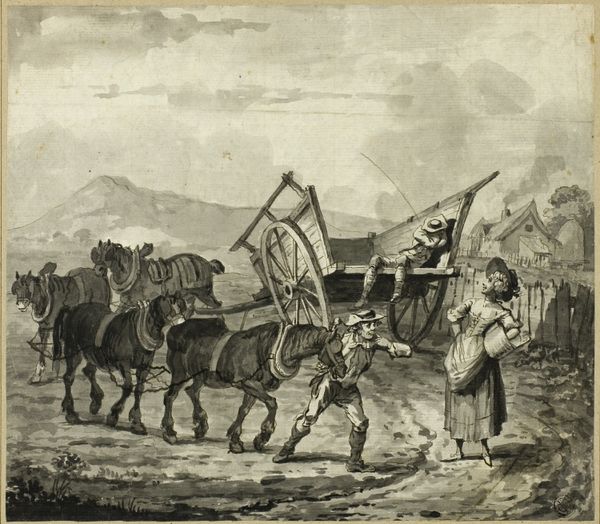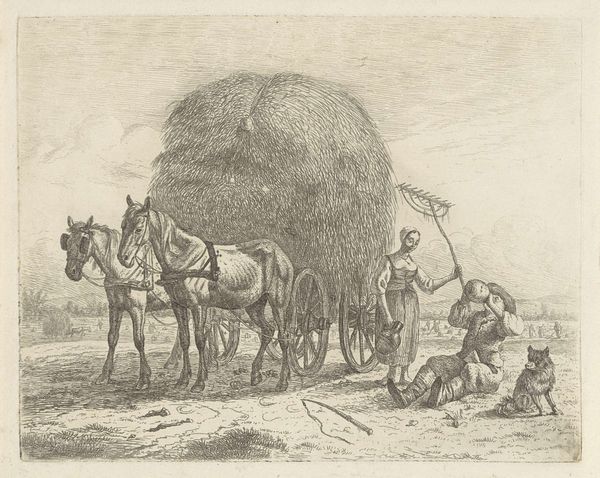
print, etching
# print
#
etching
#
landscape
#
genre-painting
Dimensions: height 146 mm, width 181 mm
Copyright: Rijks Museum: Open Domain
Curator: Christiaan Wilhelmus Moorrees created this etching, titled "Two Soldiers on Horseback on the Road," sometime between 1811 and 1867. The work depicts exactly what the title says, but somehow the scene conveys such solitude. Editor: The subdued grey tones definitely enhance the impression of loneliness, along with a kind of resignation in the carriage driver's posture. What can you tell me about the technical aspects of Moorrees' printmaking? Curator: Moorrees uses fine, deliberate lines to capture the figures and landscape with detail. Given the time frame, one could consider the socioeconomic implications. Consider who would commission or collect such work—perhaps emerging bourgeois clientele fascinated by depictions of everyday life and the military. The very fact that the artist decided to capture these soldiers, who would have played a significant role in major historical and political shifts of the era, provides insight. Editor: Agreed, it does signal social dynamics and evolving class structures, especially if etchings become more accessible. I wonder, too, about the artist's tools, inks, and the physical labor involved in repeatedly producing these prints, perhaps in slightly varying states. What stories could this image reveal about labor history, the physical effort in artistic creation? How long did it take to create an etching like this in that era, with its emphasis on traditional methods and training? Curator: That question opens up an array of perspectives about the economic and social contexts in which Moorrees worked, providing deeper insight into the art's creation and consumption. The role of materials highlights class differences in the kind of artwork created and who was commissioning or purchasing. It makes you think about issues such as sustainability and historical impacts in addition to accessibility of the arts, doesn’t it? Editor: Definitely. It's intriguing how a simple genre scene can ignite complex layers of historical, cultural, and economic narratives about artistic processes. Thanks for guiding us through it. Curator: And thank you for sharing your material analysis, offering an understanding beyond just aesthetic value.
Comments
No comments
Be the first to comment and join the conversation on the ultimate creative platform.
